No time to hit the gym to train for your IPPT? Just try these simple workouts, which you can literally do at your work desk.
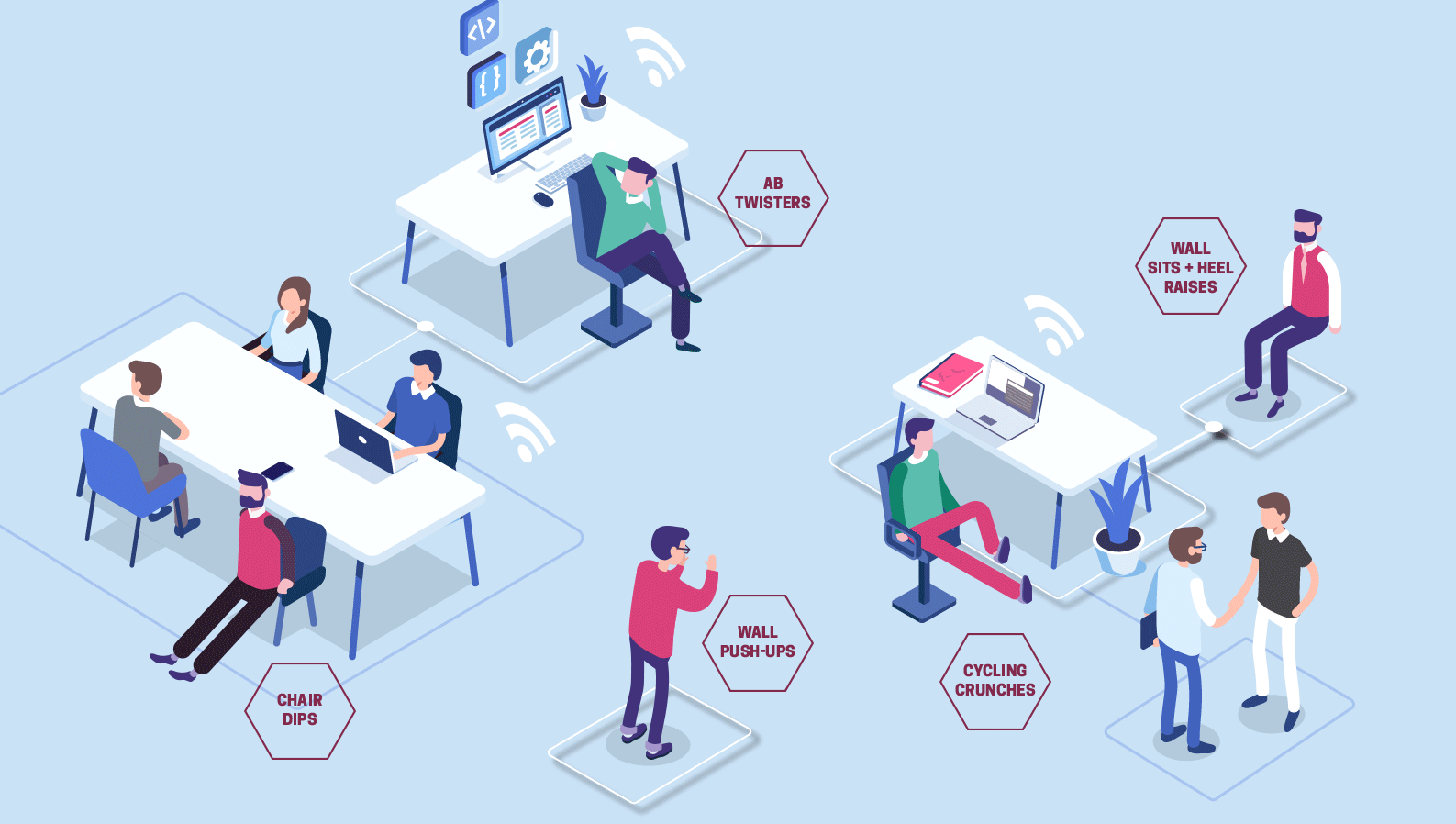
If you don’t fancy sacrificing precious sleep to visit the gym before work, squeeze in a short, low-impact workout during your lunch hour. This can help to alleviate stress levels and provide an energy boost that would help you feel more alert throughout the day.
Alternatively, DAC (NS) Mohammed Azhar Bin Yusof, a senior lecturer in Physical Education and Sports Science at the National Institute of Education, recommends exercising for just five minutes every hour, ensuring that you get that energy boost in smaller, sustained portions.

Mix and match these exercises at the office, depending on the workout intensity you’re after
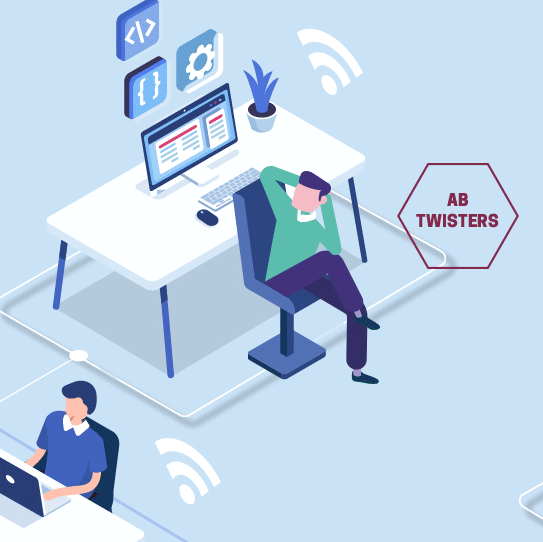
1 Sit on a chair without leaning against the back and cup your ears.
2 Lift your left knee towards your right elbow as you twist your torso.
3 Repeat for the other side. Perform 20 repetitions for 3 sets.
Azhar says: “This exercise works the abdominal muscles and improves sit-up performance for the IPPT.”

1 Sit in a stationery chair and place your hands shoulder-width apart on the seat.
2 Slide yourself off the seat with your legs extended in front of you.
3 Lower yourself as far as possible by bending your elbows, then return to the starting position.
4 Perform 3 sets of 10 dips.
Azhar says: “These chair dips work the shoulders and triceps, and will help you at the push-up station in the IPPT.”
1 Find a hefty box file or a box and hold it at shoulder height, ensuring your arms are tucked towards the body.
2 Raise the object overhead, then bring it down slowly. This is 1 rep.
3 Perform 10 before switching over to the other arm. Do 3 sets for each side.
Azhar says: “This exercise involves the shoulders [deltoids] and arm [triceps] muscles. Improvements in strength will help with the push-up station in the IPPT.”
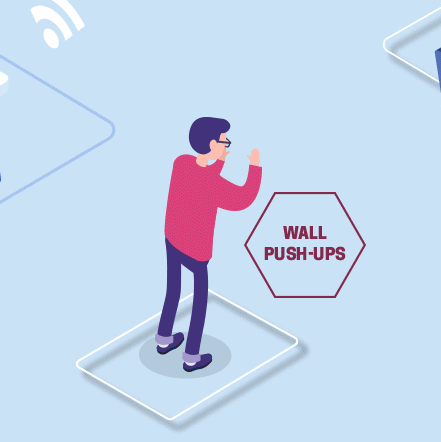
1 Stand about 1m away from the wall, with your feet shoulder-width apart.
2 Extend your arms so that your palms are touching the wall.
3 Lean in, bending your arms till your nose almost touches the wall, keeping your body straight.
4 Perform 3 sets of 20 push-ups.
Azhar says: “These exercises have a direct benefit to your push-up performance.”
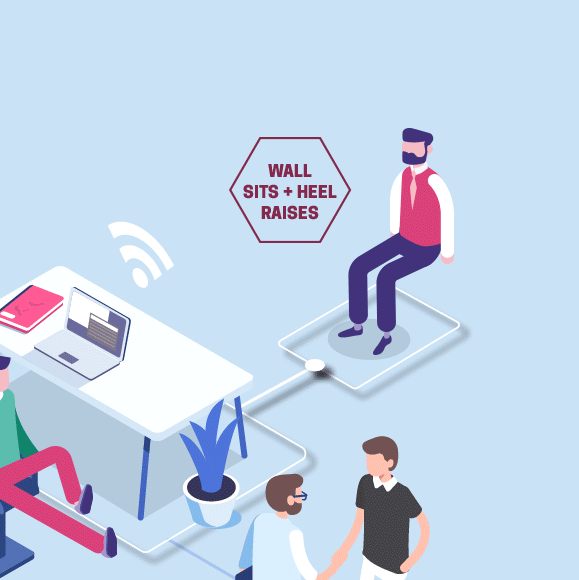
1 Stand against a wall before sliding down to a squat position, with your thighs parallel to the ground.
2 While in this position, alternate lifting your left and right heels for at least 30 seconds before returning to a stand.
3 Perform 3 sets of this.
Azhar says: “This exercise works the lower limb muscles and strengthens the calves, which can help in running.”
1 Stand upright with your feet positioned shoulder-width apart.
2 Extend your arms in front of you and slowly squat, ensuring your knees are behind your toes.
3 When your bum touches the seat of the chair, contract your glutes and return to the starting position.
4 Do 10 squats.
Azhar says: “This is a compound exercise that works all the legs muscles. It will help to improve leg strength and, therefore, running.
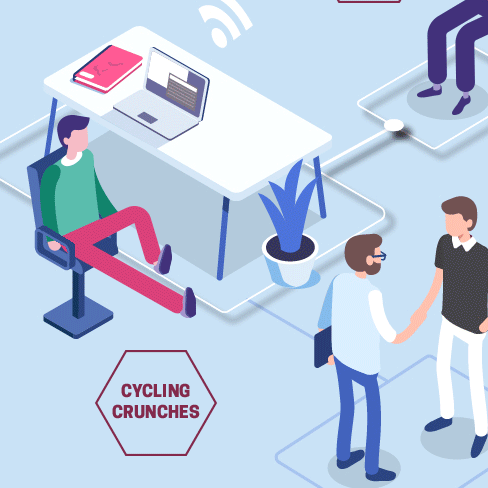
1 Hold on to the sides of your seat and lean backwards slightly.
2 Lift your legs and begin cycling in the air for at least 20 seconds, ensuring that the soles of your feet face the front.
3 Perform 3 sets of this.
Azhar says: “This exercise works the abdominal muscles and translates directly to improved sit-up performance.”

